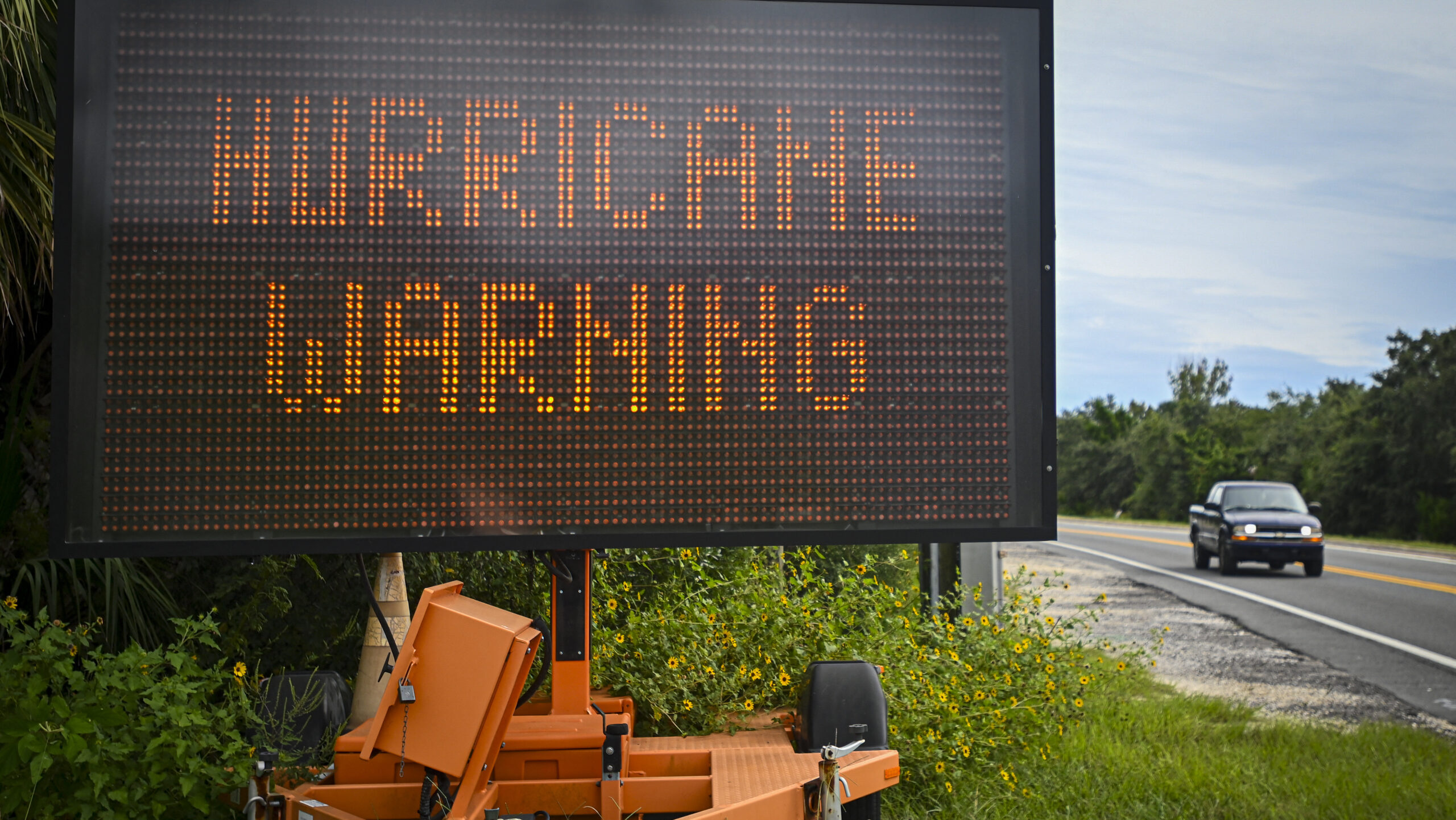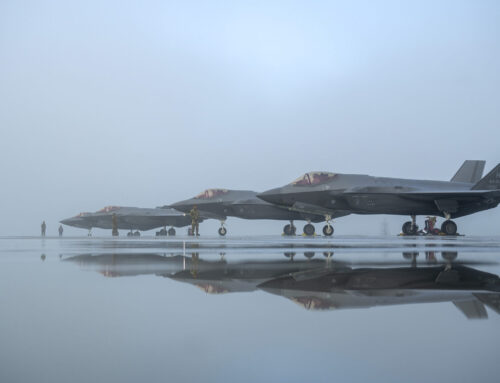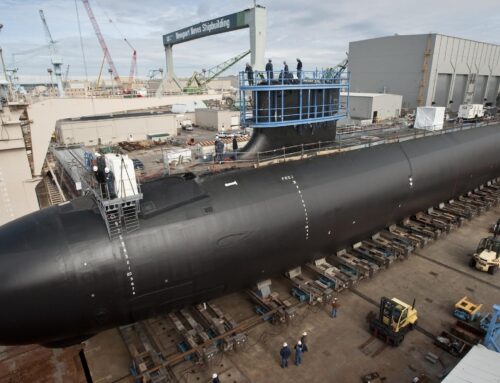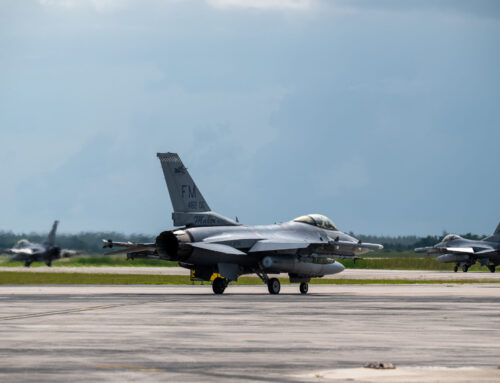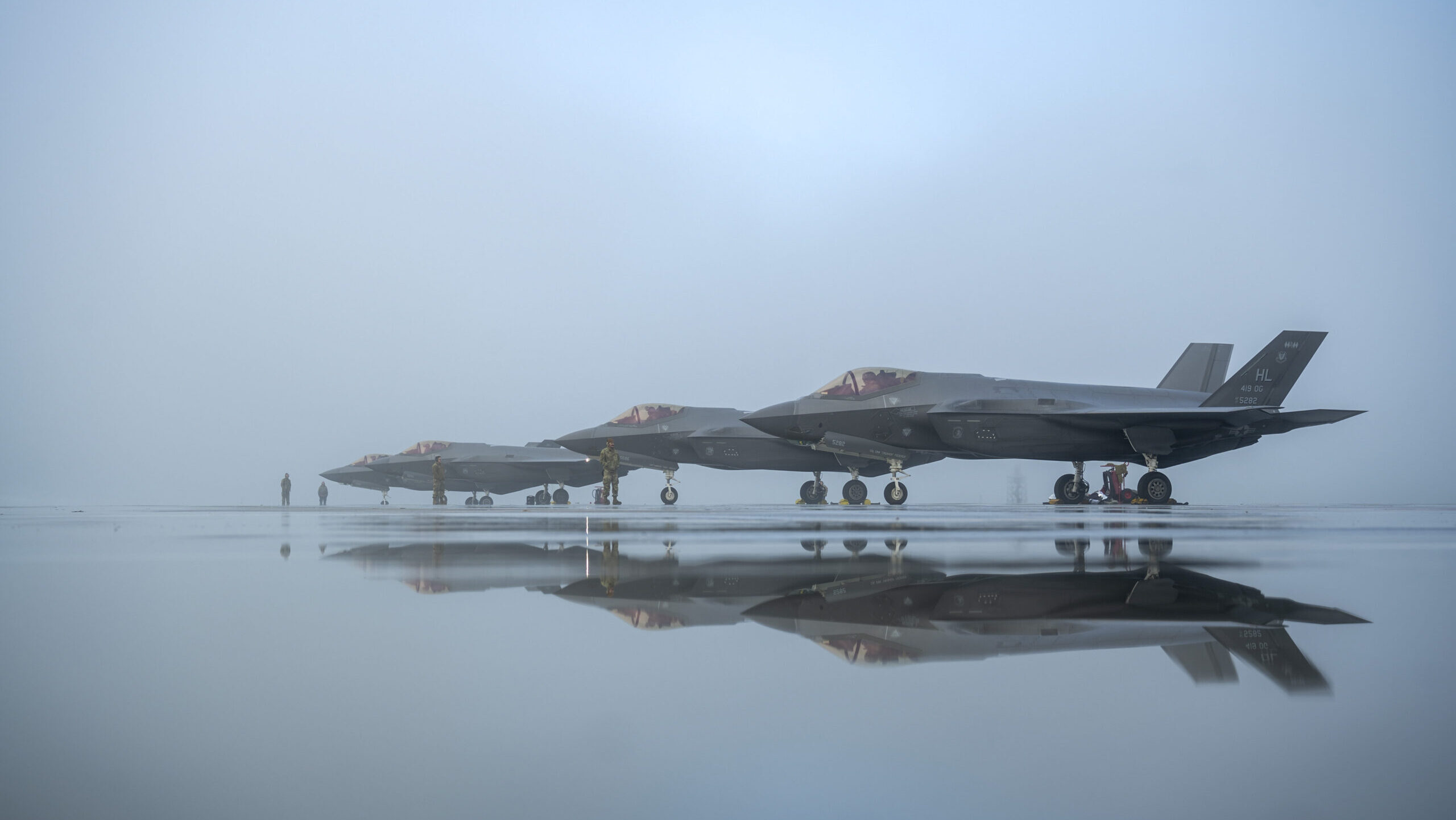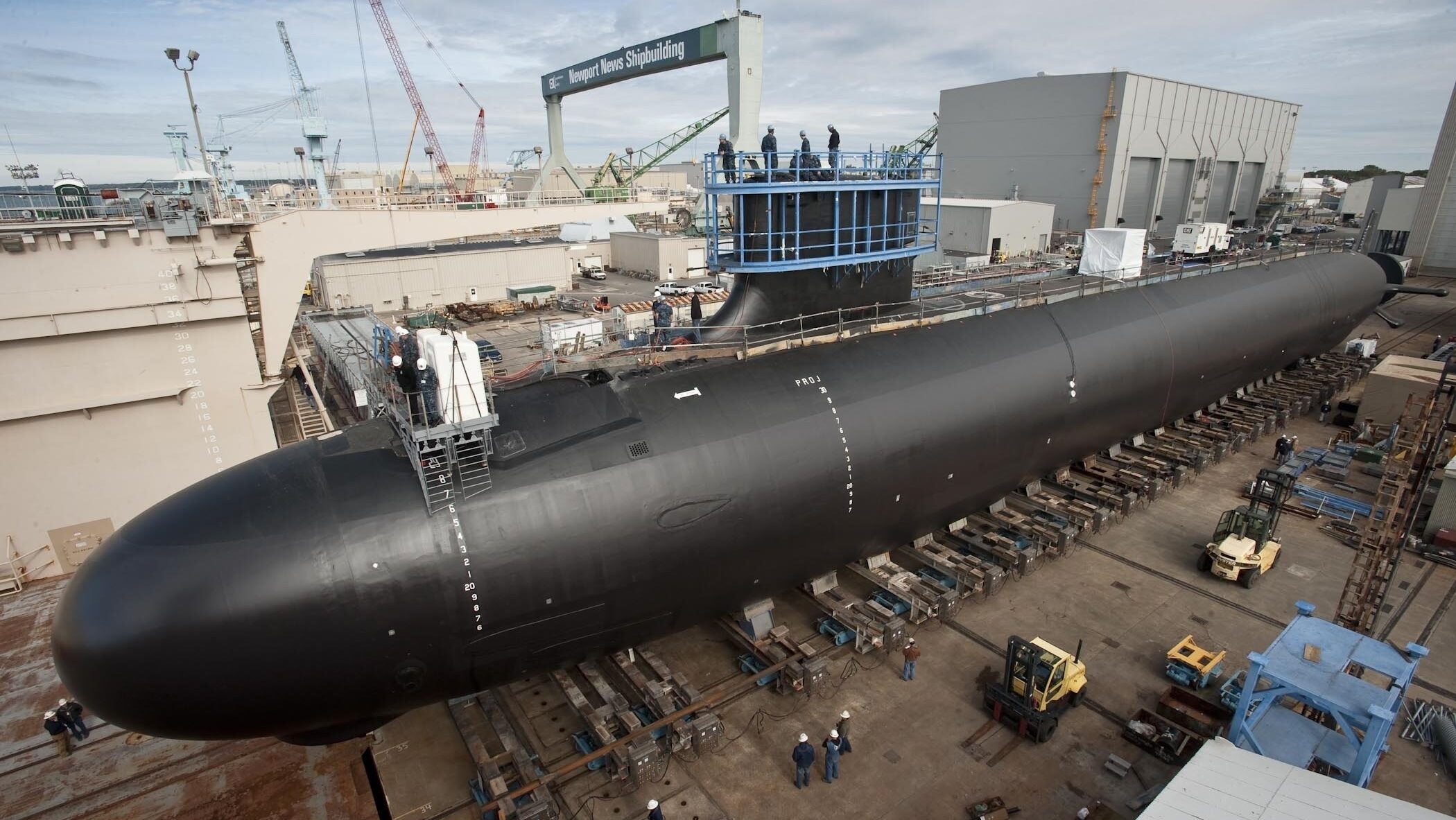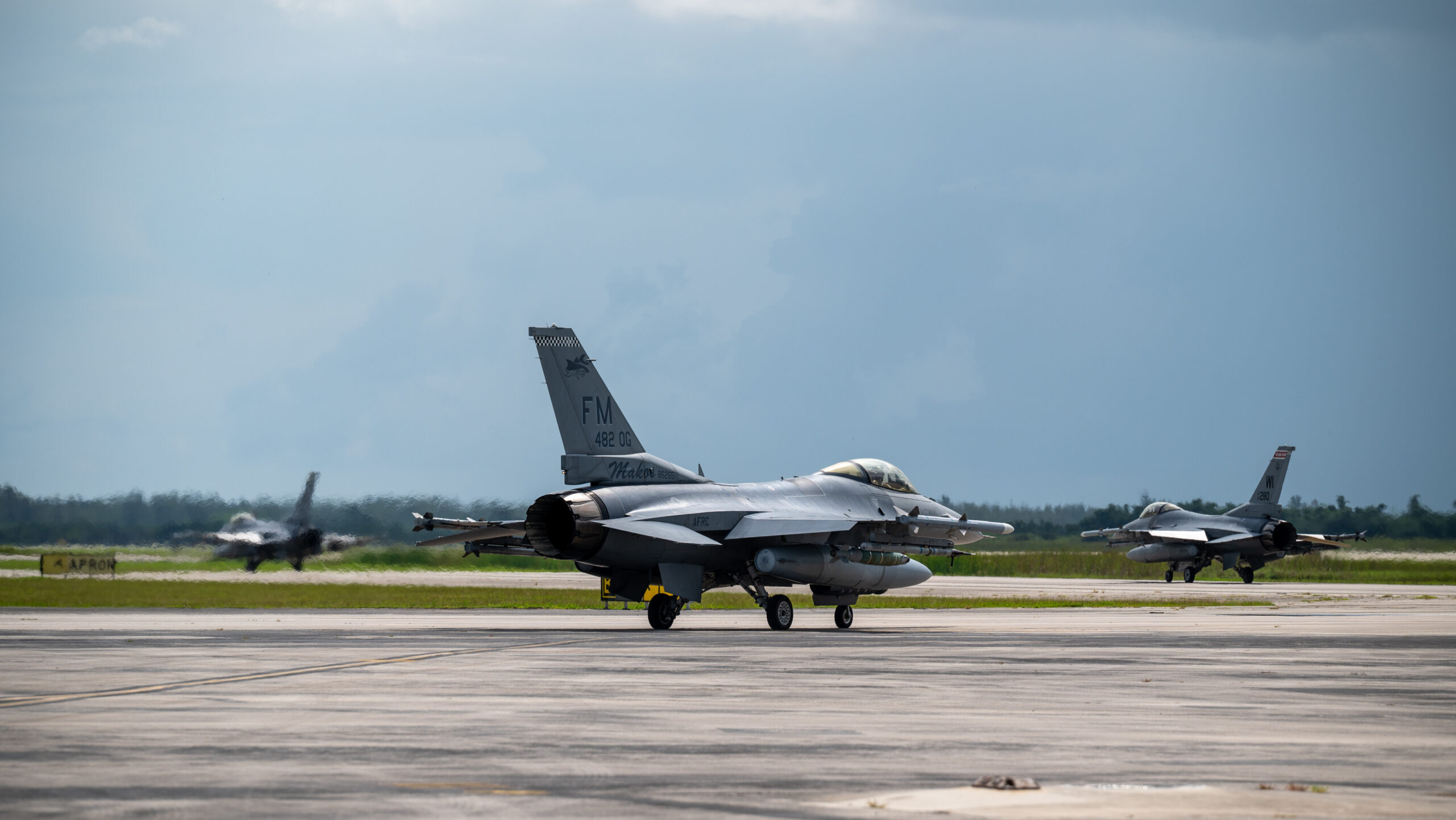A sign displays a hurricane warning along a roadside as preparations are made for the arrival of Hurricane Helene, in Cedar Key, Florida on September 25, 2024. (Photo by Miguel J. Rodriguez Carrillo / AFP) (Photo by MIGUEL J. RODRIGUEZ CARRILLO/AFP via Getty Images)
WASHINGTON — As a life-threatening Category 4 hurricane makes its way towards Florida’s panhandle, the US Navy and Air Force again have been forced to relocate numerous people, aircraft and ships — the kind of extreme weather the Pentagon has been preparing to deal with more and more often.
The National Oceanic and Atmospheric Administration is predicting the “extremely dangerous” Hurricane Helene will make landfall Thursday evening along Florida’s northwest coast, characterizing it as “unusually large” with wind fields extending as far as 275 miles from its center. Flooding is expected in Tallahassee, Atlanta and parts of North Carolina. Florida’s northern region is home to numerous military installations including naval bases in Jacksonville, Pensacola, Whiting Field as well as Eglin and Tyndall Air Force Bases and Hurlburt Field, among others.
A Navy spokesperson on Thursday told Breaking Defense the destroyers Delbert D. Black (DDG-119) and Thomas Hudner (DDG-116) left Naval Station Mayport on Tuesday, and that Mason (DDG-87) and Lassen (DDG-82) did the same on Wednesday to get out of the hurricane’s way.
“Other ships are in maintenance periods and will not sortie but will remain pierside in Mayport. Storm preparations involve positioning these ships at heavy weather moors based on the forecast of Helene and adding storm lines once the ships are in position,” the spokesperson said, adding that various aircraft had also been either evacuated or secured in hangars.
The Air Force is no stranger to the impact a cataclysmic hurricane can have on its installations. In 2018, Hurricane Michael ravaged Tyndall Air Force Base in Florida, ripping off the ceiling of aircraft hangars, destroying buildings and leveling groves of trees. While most of its F-22 stealth fighters moved ahead of that storm, about a dozen were left behind and were damaged. As the service rebuilt the base, it decided to relocate the F-22 mission and bring in F-35s.
Tyndall AFB is currently closed to non-mission essential personnel, and a small number of personnel have been directed to evacuate counties with a hurricane warning, the Air Force said. Its F-35s have been relocated to Nellis AFB, Nev., and Tinker AFB, Okla., for the duration of the storm. Its QF-16 aerial target aircraft and E-9 prop planes have also been relocated to Gulfport, Miss.
Nearby Eglin AFB, about two hours from Tyndall, has also moved to a mission-essential posture in advance of the hurricane, according to a news release. Earlier today, the base posted photos of aircraft stored away in aircraft hangars “to protect them from the coming weather conditions brought on by Hurricane Helene.”
Down the road from Eglin, all aircraft belonging to Hurlburt AFB and Duke Field have been evacuated or hangered, the Air Force said.
MacDill AFB near Tampa is under a limited evacuation notice, issued Wednesday by the base’s commander, Col. Ed Szczepanik, according to the base Facebook page. Thirteen of the base’s KC-135s were already off-station, 11 KC-135s were evacuated to Bangor, Maine and Pease, NH, and two tankers were put in hangars on base, the Air Force said.
Patrick Space Force Base — near Melbourne, Fla. — closed some facilities today but has not issued any evacuation notices, the Air Force said.
Outside Florida, Moody AFB in Georgia has evacuated its C-130s, A-10s and HH-60s to Columbus AFB, Miss., but there are “no indications” it will evacuate personnel, the Air Force stated.
Of the C-17s at Joint Base Charleston in South Carolina, the Air Force evacuated 15 planes, put three in hangars on base, and sent three on missions this morning, in addition to the 24 aircraft already off station.
The final destinations for aircraft during a natural disaster is “determined based on the severity of weather events and space availability,” an Air Force spokesperson said. “Air Force Weather Airmen at local installations in coordination with the 557th Weather Wing determine the timing, intensity, storm track, and other factors affecting both military operations and resource protection” and work with commanders to figure out where to disburse aircraft.
Operations group commanders coordinate evacuation locations before, during and after a storm, the spokesperson said. Then, the final decision to evacuate aircraft, personnel or equipment is made by the wing commander and reviewed by that unit’s major command.
Weather As A Strategic Obstacle
The kinds of damage natural disasters such as Hurricane Helene have been at the top of mind for Pentagon officials in recent years — particularly Navy leadership whose installations and shipyards are inherently located in areas that can be prone to flooding.
Thinking through how the service might deal with a given a natural disaster has been the subject of both war games and strategic documents signed out by Navy Secretary Carlos Del Toro and Meredith Berger, the service’ assistant secretary for energy, installations and environment.
RELATED: An Island, An Amphib, A Typhoon: Navy Hosts Climate-Focused War Game
That eagerness to address climate-related issues though has also resulted in Del Toro being publicly confronted by lawmakers with accusations that he is prioritizing climate change over shipbuilding and warfighting.
In one hearing earlier this year, during which multiple GOP lawmakers became visibly irate with the Navy secretary, Del Toro defended his record, stating he spends “75 [percent] of [his] time on shipbuilding,” but insisted being prepared for climate incidents remains a major concern.
More broadly, however, Pentagon officials have for years now made the argument that climate change, and the extreme weather that goes with it, is a national security concern all its own.
“You can’t train for combined operations with allies and partners if the training facilities are flooded,” Deputy Defense Secretary Kathleen Hicks said last August, after another hurricane tore through the southern US. “You can’t run an installation without water because you’re in a drought, and you can’t adequately prepare for future threats if you’re occupied with urgent crises.”


